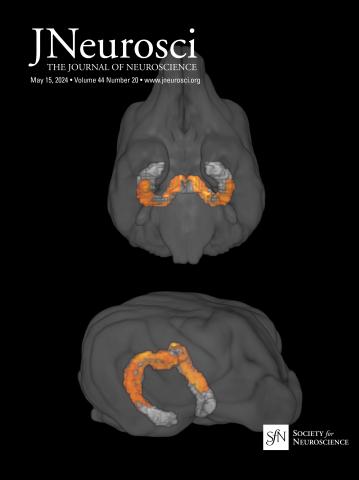The circadian clock component REV-ERBs is an analgesic target for cancer-induced tactile pain hypersensitivity.
IF 4.4
2区 医学
Q1 NEUROSCIENCES
引用次数: 0
Abstract
Neuropathic pain is one of the most intractable pain conditions associated with tumor growth compressing and damaging nerves. A troublesome hallmark symptom of neuropathic pain is hypersensitivity to innocuous stimuli, known as "tactile allodynia," which is often refractory to currently available analgesics. Diurnal variations in pain hypersensitivity are common in patients with cancer, but the underlying mechanisms are enigmatic. Herein, we report that spinal expression of lipocalin-2 (LCN2) enhances pain sensitivity of NCTC2472 fibrosarcoma-implanted male mice during specific stages of the diurnal cycle. As the tumor grew, interleukin-6 (IL-6) levels increased in the spinal cord of the mice. Increased IL-6 levels stimulated LCN2 expression in spinal microglia, but this expression was periodically repressed by the circadian clock components REV-ERBα and REV-ERBβ. Notably, intra-spinal dorsal horn injection of lentiviral vectors expressing REV-ERBα or REV-ERBβ in tumor-bearing mice alleviated tactile allodynia. Furthermore, intrathecal injection of SR9009, a synthetic agonist of REV-ERBs, also attenuated cancer-induced pain hypersensitivity, accompanied by suppressing spinal LCN2 expression. These results suggest that temporal elevation of LCN2 expression decreases the threshold of tactile pain hypersensitivity induced by tumor growth. We propose that the circadian clock component of REV-ERBs is an effective target for alleviation of cancer-induced tactile allodynia, identifying a new class of analgesic agents.Significance statement Spinal expression of lipocalin-2 (LCN2) enhances pain sensitivity of NCTC2472 fibrosarcoma-implanted mice during specific stages of the diurnal cycle. Following tumor growth, an increase in interleukin-6 (IL-6) levels within spinal cord induces the microglial expression of LCN2, which is periodically suppressed by the circadian clock components REV-ERBα and REV-ERBβ. The temporal elevation of LCN2 expression decreases the threshold of tactile allodynia induced by tumor growth. Enhanced expression of REV-ERBs in spinal microglial and their pharmacological activation by the synthetic agonist SR9009 alleviate cancer-induced pain hypersensitivity. These findings reveal the circadian machinery affecting cancer-associated intractable pain and propose that REV-ERBs are an effective target for alleviation of cancer-associated neuropathic pain.生物钟成分REV-ERBs是癌症诱发的触觉疼痛超敏反应的镇痛靶点。
神经性疼痛是与肿瘤生长压迫和损伤神经相关的最难治性疼痛之一。神经性疼痛的一个令人烦恼的标志性症状是对无害刺激的超敏反应,被称为“触觉异常性疼痛”,目前可用的镇痛药通常难以治疗。疼痛超敏反应的日变化在癌症患者中很常见,但其潜在机制尚不清楚。在本研究中,我们报道了脂肪钙素-2 (LCN2)的脊柱表达增强了NCTC2472纤维肉瘤植入雄性小鼠在昼夜周期的特定阶段的疼痛敏感性。随着肿瘤的生长,小鼠脊髓中的白细胞介素-6 (IL-6)水平升高。升高的IL-6水平刺激LCN2在脊髓小胶质细胞中的表达,但这种表达被生物钟成分rev - erba和rev - erbb β周期性抑制。值得注意的是,在荷瘤小鼠脊髓背角内注射表达REV-ERBα或REV-ERBβ的慢病毒载体可减轻触觉异常性痛。此外,鞘内注射SR9009(一种REV-ERBs的合成激动剂)也能减轻癌症引起的疼痛超敏反应,同时抑制脊髓LCN2的表达。这些结果表明,LCN2表达的时间升高降低了肿瘤生长引起的触觉痛超敏反应的阈值。我们提出REV-ERBs的生物钟成分是缓解癌症引起的触觉异常性疼痛的有效靶点,确定了一类新的镇痛药物。脊柱中脂脂素-2 (lipocalin-2, LCN2)的表达增强了NCTC2472纤维肉瘤植入小鼠在昼夜周期特定阶段的疼痛敏感性。肿瘤生长后,脊髓内白细胞介素-6 (IL-6)水平的升高诱导LCN2的小胶质表达,而LCN2被生物钟成分rev - erba和rev - erbb β周期性抑制。LCN2表达在时间上的升高降低了肿瘤生长引起的触觉异常性痛的阈值。合成激动剂SR9009增强REV-ERBs在脊髓小胶质细胞中的表达及其药理激活可减轻癌变的疼痛超敏反应。这些发现揭示了影响癌症相关难治性疼痛的昼夜机制,并提出REV-ERBs是缓解癌症相关神经性疼痛的有效靶点。
本文章由计算机程序翻译,如有差异,请以英文原文为准。
求助全文
约1分钟内获得全文
求助全文
来源期刊

Journal of Neuroscience
医学-神经科学
CiteScore
9.30
自引率
3.80%
发文量
1164
审稿时长
12 months
期刊介绍:
JNeurosci (ISSN 0270-6474) is an official journal of the Society for Neuroscience. It is published weekly by the Society, fifty weeks a year, one volume a year. JNeurosci publishes papers on a broad range of topics of general interest to those working on the nervous system. Authors now have an Open Choice option for their published articles
 求助内容:
求助内容: 应助结果提醒方式:
应助结果提醒方式:


